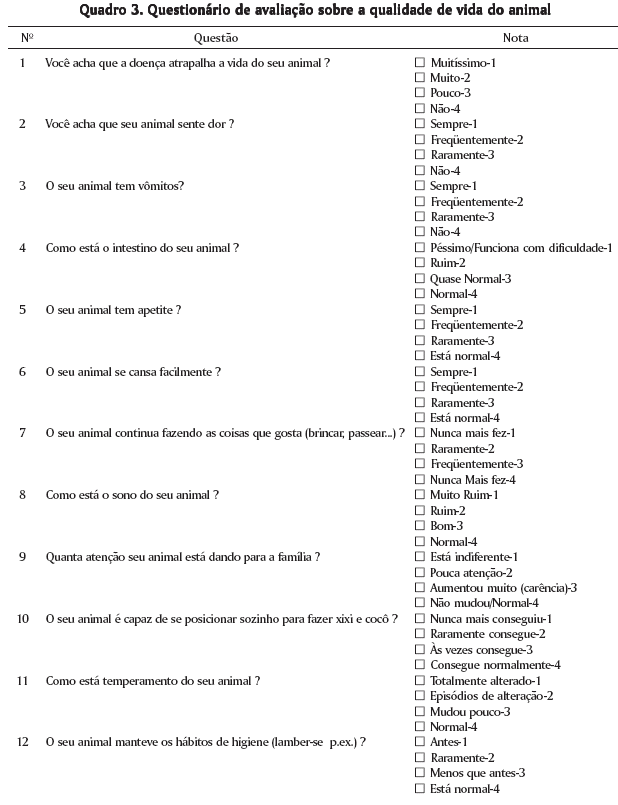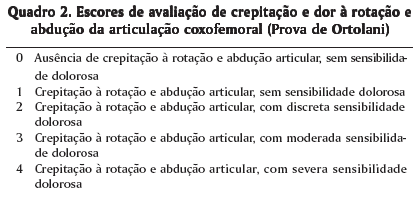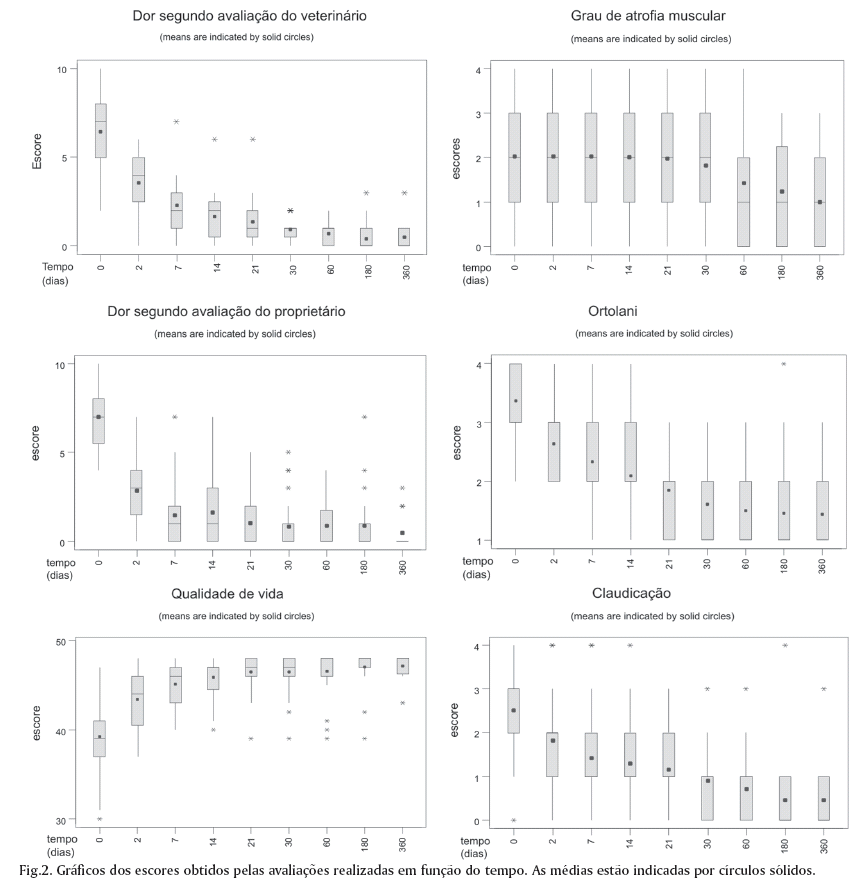The aim was to evaluate the clinical results of cranial and dorsal acetabular denervation using curettage in dysplastic dogs. Ninty seven dogs without distinction of breed and sex, 1 to 7 years of age, were analyzed for diagnosis and treatment of hip dysplasia, based on physical examination, clinical signs and radiographic findings. For evaluation of results of the surgical denervation technique, clinical examinations were performed preoperatively (initial exam) and postoperatively at days 2, 7, 14, 21, 30, 60 180 and 360. All animals were evaluated for lameness, pain to movement and touch, muscular atrophy degree, pain sensivity to Ortolani's test and assessment of life quality. The surgical denervation procedure decreases lameness, pain to movement and touch after 2 days of procedure, decreases muscular atrophy after 60 days of procedure, and improves quality of life from the owner's and veterinarian's point of view even after 1 year of the treatment. Dorsal acetabular denervation is a feasible surgical technique in treatment of pain secondary to hip dysplasia in dogs, with significant decrease of pain after 2 days of treatment, improvement of quality of life, decrease of lameness, and consequently joyful animals and owners extremely satisfied with the results obtained by the proposed treatment. The surgical technique must include the curettage of nerve fibers from the cranial-dorsal and dorsal region of the acetabular periosteum.
Dogs; surgery; urthopaedics; hip dysplasia





